
To develop their muscle mass, women and men must train in the same way: at least 60% of their maximum power.
It’s important to note that gaining muscle and losing fat simultaneously is physiologically impossible; the two must therefore be spread over two different periods of time.
So if you are wondering how long does it take to build muscle for a woman, then here is your short the answer:
Although different factors such as training and nutrition make it difficult to predict your muscle gain speed, it’s safe to say that you can gain up to 11 pounds (5 kg) of muscle mass in the first year if you have good predispositions.
After training for two years, you can gain up to 6.6 pounds (3 kg) and 3.3 pounds (1.5 kg) after the third year.
Beyond 3 years of training, muscle gain generally does not exceed 1 pound (0.5 kg) per year until the genetic limit is reached and muscle development stops almost completely.
Keep reading to find out more about the other important factors that can help you have an optimum muscle growth.
The benefits of bodybuilding
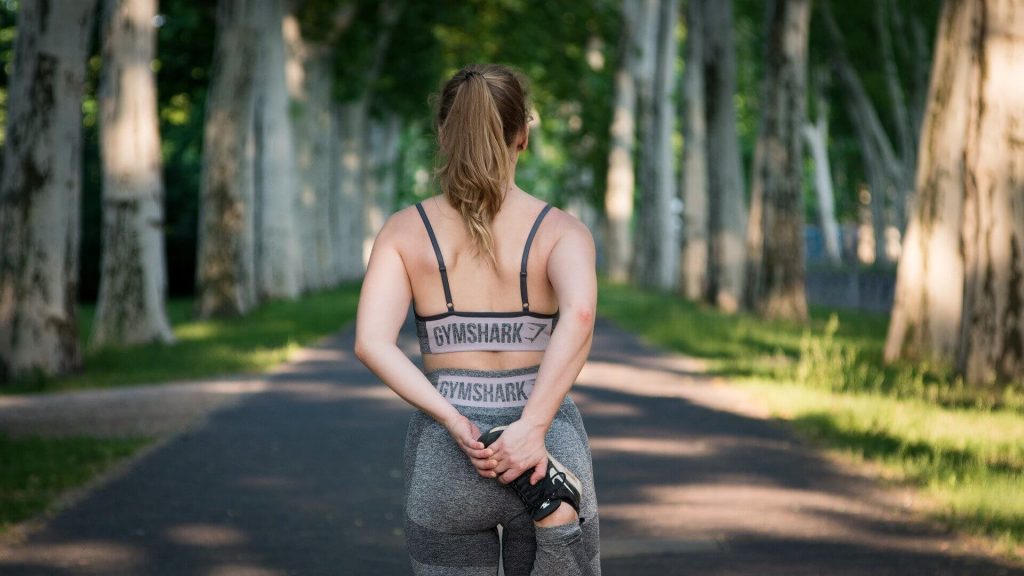
The image of women and that of bodybuilding were dissociated in the collective consciousness for a long time – apart from top athletes. But that has radically changed!
Many women now know that bodybuilding will not turn them into “heaps of muscles” without any female curves. This is because women simply do not have the genetic predisposition for this.
If you don’t believe it, just look at stars like Beyoncé, Scarlett Johansson or Jessica Biel. They all do bodybuilding and reflect a feminine, fit and sexy image.
Better health
We sit too often daily and thus put very uneven pressure on our body. The lower body is not stressed enough by our modern lifestyle.
This partial muscle’s weakness can cause a muscle imbalance which can lead to pain such as muscle tension and headaches.
Certain parts of the body are thus too weakened and need to be strengthened to restore muscle balance.
It is because most modern professions do not use all our muscles that many people have very weak muscles. It is however possible to remedy this to a lesser extent by making a few small efforts daily. Moving more on foot or bicycle, taking the stairs instead of the elevator, etc.
Rest assured, you don’t need to be a mover to strengthen your muscles!
You are in a relatively good shape if it takes no effort for you to carry a pack of bottled water up the stairs! With a little physical exercise, you will soon be able to carry two packs.
Why is it desirable? Because sooner or later your age will affect your body and your muscle strength will inevitably decrease. The higher your starting level, the better off you will be.
The more your muscles are strengthened, the less your ligaments, cartilages and joints will be stressed, and the less they will be damaged.
More efficient in sport

It is now accepted that gaining muscle mass has a positive effect on performance in any sport, whether it is running, golf, swimming, handball, sailing or horse riding.
So, if you are ambitious and passionate about a sport, we recommend that you do some weight training to facilitate the practice of your favorite activity.
Strengthened muscles not only increase your performance because they make you stronger, faster and more enduring, but they also protect you from injury. In fact, they make your joints more stable and your bones stronger. The risk of injury during strength training is also very low.
Feel better in your body
Strength training makes you sexy because it improves your posture and makes your body more defined. The extra muscles can also make your skin firmer in some places (the muscles develop against the inner wall of the skin, which increases its tension).
To feel better about yourself, we recommend Collagen Peptides Powder! Collagen shots provide your skin and connective tissue with all the nutrients they need to radiate from the inside. Click here to find out more about naked Collagen Peptides Power
Female muscles: what differences from men?
There are certain anatomical differences between men and women that affect their strength and the possible margin of muscle development.
Although both sexes have the same type of muscle fiber distribution (type I, slow fiber, and type II, fast fiber ratio), women overall have fewer muscle fibers, which are also smaller than those of men. [1] For example, a Caucasian woman aged 31 to 35 has an average muscle mass of 34 kg, while a man of the same type and age has around 41 kg. [2]

In three out of four untrained women, type I slow fibers are also wider than type II fast fibers. The latter have the greatest growth potential.
Type II fibers are driven by force and speed. This phenomenon could be explained by the fact that women use less force and speed in their daily activities than men.
But it could also be a real difference between the sexes.
Women’s weak point: upper body
Ideally, a bodybuilding program for women should aim to specifically stimulate type II fibers. This means that gaining mass and strength in women depends on (very) heavy training, even more than in men.
To stimulate the growth of type II fibers, it is therefore necessary to train according to the principle of “muscular hypertrophy”. This means performing eight to twelve repetitions with a maximum load.
Advanced sports enthusiasts should even progress gradually to their maximum power zone, where they can perform only one to five repetitions with the same weight.
We also advise you to integrate explosive movements, at equal or slightly higher weight, to work your “force-speed”.
Burpees or popped pumps are examples of exercises designed to work on explosiveness.
The lower amount of muscle fiber in women compared to men results in a 40% difference in total body strength. Indeed, women on average have less strength, especially in the upper body.
While the lower body of women (legs and glutes) can generate 70 to 75% of the strength of that of men, their trunk and arms generate only 25 to 55%. It is therefore extremely important that women do not focus only on their natural strengths, as much for their sports performance as for their daily skills.
On the contrary, their training should also and above all be designed to strengthen the upper body.
A different hormonal system
Even women with a high concentration of androgens, have only 1/10 or 1/20 of the amount present in men.
A higher amount of androgens allows men to build more muscle and produce less body fat in absolute terms.
Men in good health have an average of 8 to 15 kg of body fat while women have 10 to 20 kg. [3] This is due to the human “growth hormone”, of which women have a larger quantity than men, which is responsible for the accumulation of tissue and compensates for the low testosterone level.
Bodybuilding Tips for Women
For optimal and rapid mass gain, here are the most important tips to include in your training program.
We advise you to stick to it as much as possible. These are the standard criteria for an effective bodybuilding program.
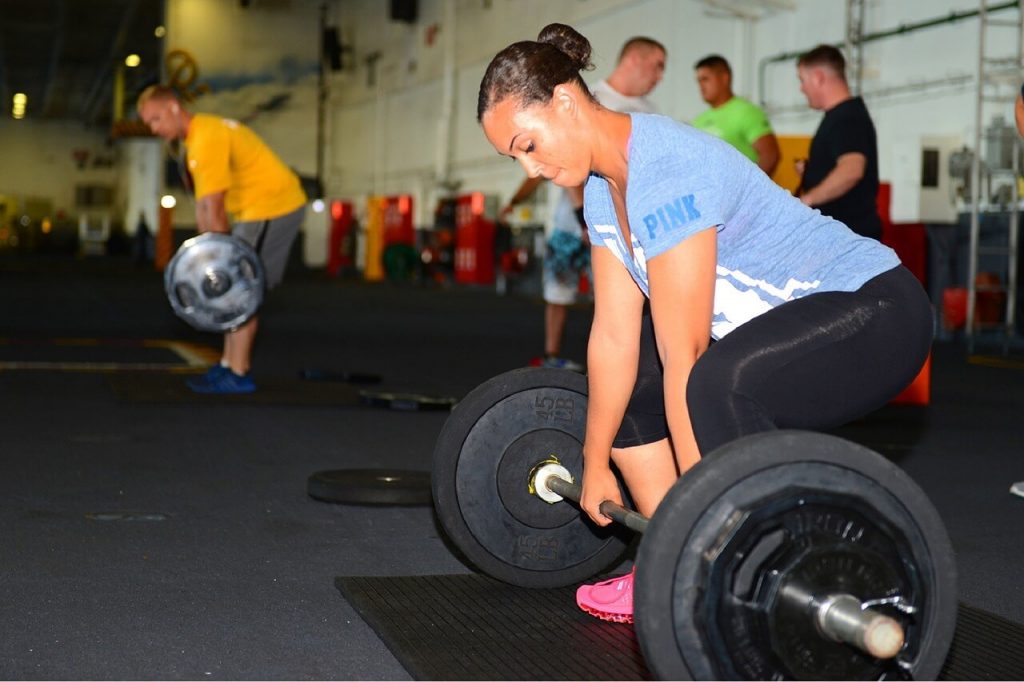
Training frequency
We start with how often you should train as a woman. Each muscle should be used two to three times a week. A 48-hour rest should be scheduled between two workouts of the same muscle group.
For example, you can train on Mondays, Wednesdays and Fridays. If you don’t want to train more than four times a week, then you should opt for full body training. Indeed, a split routine would not be effective at this training frequency. This is because your muscles would be used too infrequently for them to develop effectively.
If you choose four workouts per week, you could do two upper body sessions and two lower body sessions. Thus, your main muscle groups will be intensively stimulated twice a week.
Training Duration
A workout should last a maximum of 45 to 60 minutes , to which must be added at least five to ten minutes of warm-up. To warm up, you can do a short cardio phase to slowly increase your heart rate.
You can then continue with exercises, of which you will perform several sets with light weights (much lower than those of the training itself).
Stretching, in other words static stretching, should not be included in the warm-up or in the recovery period. Performed before training, stretching “steals” the strength you will need for the future. Performed directly after training, they further damage the muscle tissue, which will tend to prolong the regeneration time and intensify aches. [4]
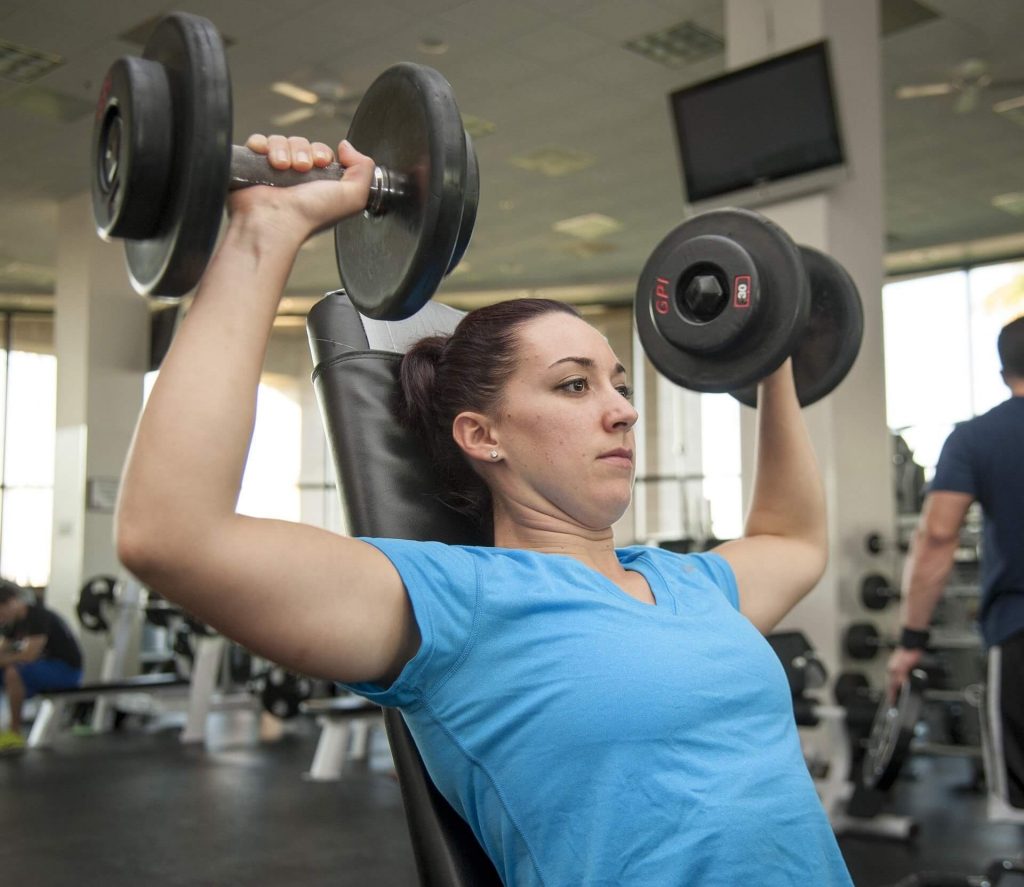
It is advisable not to do cardio and strength training on the same day. Doing cardio before a weight training session will not allow you to reach your maximum power during heavy exercises since you will not have enough energy.
However, you can do this if your priority is to improve your endurance. On the contrary, if you want to gain strength and gain muscle mass, we advise you to give yourself fully to the adapted training.
Cardio training after weight training is therefore the best choice if in doubt, but also has a disadvantage: your muscles are exhausted by training and should be immediately replenished with what they need to regenerate and grow. (mainly water, carbohydrates and proteins).
If you miss a snack break immediately go on the cross-trainer, you will further exhaust your body’s energy reserves. In this case, you will need to stick to it during the next meal, ensuring that it is sufficiently rich in carbohydrates and proteins.
Training Structure
The following training structure is generally adopted for effective mass gain:
Series by Exercise: 3
Number of repetitions per set: 8 – 12
Rest time between sets: 1.5 – 3 minutes
Speed of execution: continuous-fast (4 – 5 seconds per complete repetition)
Breathing: breathe in the eccentric phase (by stretching), exhale in the concentric phase (by contracting). “Pressure breathing” is however used in many polyarticular exercises and must be learned.
Exercises Selection
For a full body workout, choose exercises that aim to work all large muscle areas. If you are not sure which exercises are suitable, ask a trainer for advice.
Try to include as many “polyarticular exercises” as possible in your program, such as the squat, deadlift, bench press, pull -ups, or military bench press, as these are the most functional and involve multiple muscles. that time. These exercises are however quite complex.
If you can’t get a professional advice for this type of exercise, the alternative is to use the bodybuilding machines which simulate more or less exactly the polyarticular exercises (leg press, chest press, shoulder press, chest pull to the pulley).
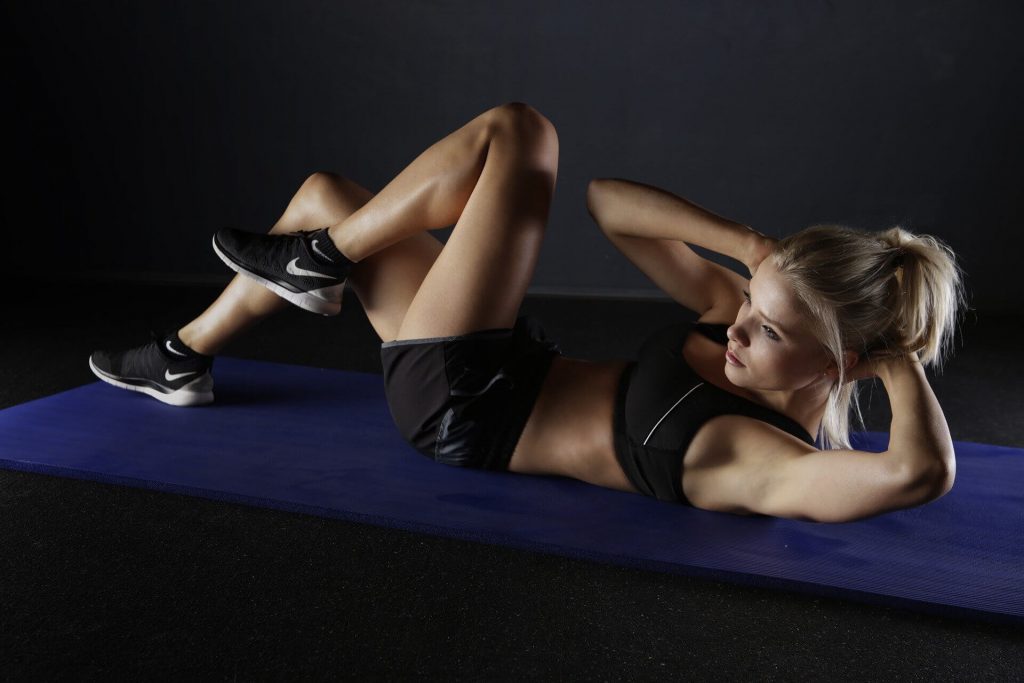
If there is no specific machine like the deadlift, prefer “isolation exercises”, that is to say exercises that require only one or two muscles at a time.
When it comes to the number of exercises, you should not be too ambitious: not only in relation to the duration of the training, but also because the polyarticular (machine) exercises performed already make it possible to use a large part of the muscle groups.
These also allow you to do without isolated training for each muscle. Performed without a machine, polyarticular exercises can even replace abdominal exercises, because they require to be constantly sheathed and thus strengthen the trunk optimally.
Don’t have a gym membership? So do your strength training at home !
About your muscle gain
Your muscles must be tired from training. This means that you should run your series until muscle failure.
But it’s not as scary as it sounds: in practice, it just means that you do an exercise until you can no longer do a correct additional repetition.
This failure is also signaled by a burning sensation in the muscles, or possibly tremors, and should be achieved after eight to twelve repetitions. If you are exhausted before the end of the series, it is probably because the weight used is too high. If on the contrary, you do not feel these “symptoms” at the end of your series and that you could easily continue, it is you are using too light a weight.
You will be able to perform the same number of repetitions again after a break of one minute and a half to three minutes. The goal of this type of training is to create small cracks in the muscles which will then be repaired by your body. Regeneration also “strengthens” muscle tissue by forming additional protein structures.
Weights
It is important that the weights chosen allow this state of “muscle failure” to be achieved after eight to twelve repetitions. Because indeed, it is only thus that you will stimulate your muscles so that they develop in an optimal way. You will likely experience aches after the first few weights or when you add a new exercise to your program. This is completely normal.
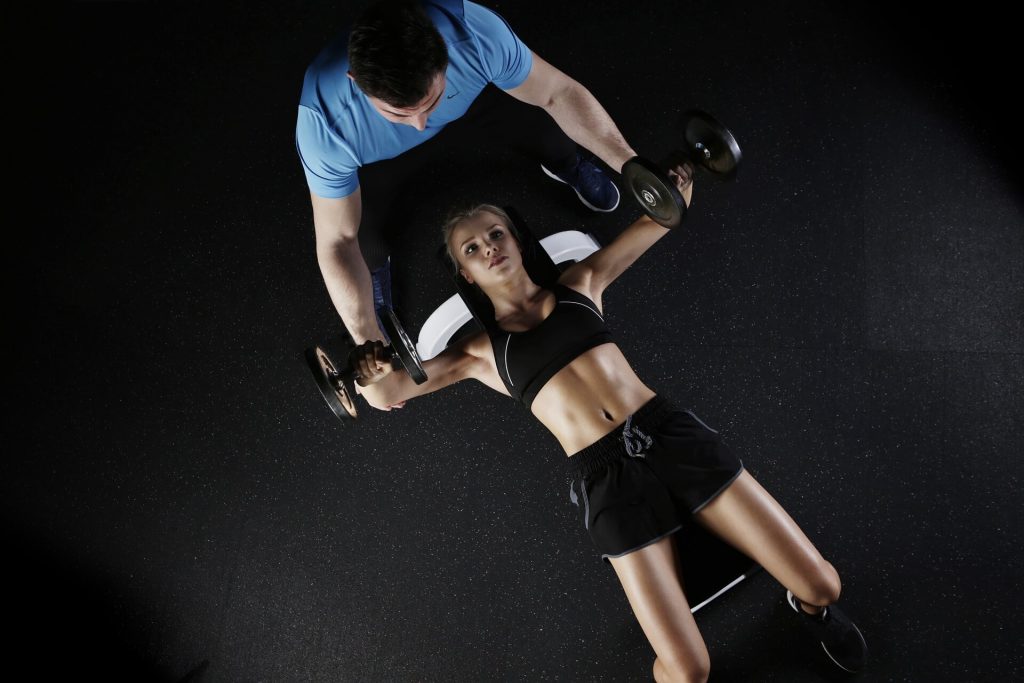
Make sure to regularly increase your used weights to stay within the range of a maximum of eight to twelve possible repetitions.
Before training according to the hypertrophy method described above, you should train with lower loads for two to eight weeks (depending on your initial level): you should only reach muscle failure after 20 to 30 repetitions. The interval between sets should be one to two minutes.
The purpose of this enduring training is to adapt your bones, tendons, ligaments and cartilage to new loads as you go along.
How Long Does it Take to Build Muscle For a Woman? Expected results
It is difficult to predict the speed at which you will gain muscle mass, because many factors (training, nutrition, regeneration, genetics …) influence this process. If you have good predispositions, you can gain up to 5 kg of muscle mass in the first year.
After the second year of training, you can gain up to around three kilos and after the third year, up to a kilo and a half. Beyond that, muscle gain generally does not exceed half a kilo per year until the genetic limit is reached and muscle development stops almost completely.
The higher your initial level, the less additional muscle mass you will gain.

What to eat to gain muscle as a woman?
Caloric requirement
Each person has a different caloric requirement, which is mainly measured by gender, weight and physical activity. Now calculate your energy balance on our Food for weight gain page!
Calorie Surplus
To gain muscle mass, both women and men need moderate calorie surplus, also called “positive calorie balance”. The principle is to eat and drink until you reach a calorie surplus of 300 to 500 kcal per day once you have subtracted the calories you burn from the calories you consume.
So, if you burn 2,500 kcal per day, you should consume 2,800 to 3,000. Obviously, this excess calorie will only lead to mass gain if you train regularly and correctly. If so, you simply store the extra energy as fat. You now know how many calories you need to build muscle.
Protein
Proteins are the building material for your muscles. They are made up of amino acids, some of which cannot be produced by the body. In this case, they are “essential amino acids”. Without physical activity, you need about 0.8 g of protein per kg of body weight (KG) per day according to the specifications of the German Nutrition Society (Deutsche Gesellschaft für Ernährung). [5]
This recommended value increases to 1.7 g / kg KG for athletes. Your body does not use more protein to build muscle. In total, protein should make up around 20-30% of your diet if you want rapid muscle growth. Now you already know how much protein you need as a woman to build muscle.
Carbohydrates
They provide your body and especially your muscle cells with the energy you need for strength training. In addition, they release insulin: this hormone brings amino acids to your muscles and thus leads to muscle development. 40 to 50% of your calories should come from carbohydrates.
Be sure to favor complex (“slow”) carbohydrates and avoid simple (“fast”) carbohydrates.
Fat
A diet aimed at gaining muscle mass should include lots of carbohydrates and proteins and a moderate amount of fat. [6] This diagram should be remembered, but while bearing in mind that it refers rather to the quantity of these nutrients than to the number of calories they represent. Indeed, fats should provide 20 to 30% of daily calories, or as many calories as protein.
However, since one gram of fat contains nine calories and one gram of protein contains only four, you will eat less than half of your protein in fat.
Regarding lipid composition, you should not eat more than 33% saturated fatty acids (butter, lard, coconut oil), not more than 25% polyunsaturated fatty acids (safflower oil, sunflower oil, seeds chia) and at least 42% monounsaturated fatty acids (olive oil, rapeseed oil, hazelnut).
You should also make sure you have an adequate supply of omega-3 fatty acids. They are found in fatty sea fish, avocados, eggs or flaxseed oil.

Your diet
Low carb , ketogenic and hyperprotein diets are often wrongly considered as diets suitable for bodybuilding because of their high protein content. But if you take a closer look at the questin, they are anything but ideal if you really want to gain mass. Among other things and especially because carbohydrates are our most efficient “fuel”.
A lack of carbohydrates limits sports performance, such as that of weight training. Another reason is also the low release of insulin due to constant hypoglycemia: thus, these diets can be an effective means of reducing your fat mass but are harmful in terms of muscle building because insulin activates the protein synthesis of muscles.
Fit Shake: a booster for your muscles
The RSP TrueFit Shake plays a key role in the food program because it provides you with high-quality nutrients for your mass gain and for your general physical condition: milk proteins and collagen guarantee you a qualitative protein intake.
Collagen is also a major component of connective tissue.
The shake also contains vitamin C, copper, choline and EGCG green tea extract! In addition, it provides you with ten percent of dietary fiber for a better feeling of satiety and optimal digestion.
One serving of RSP TrueFit Shake also covers 30% of daily beauty nutrient requirements like biotin, vitamin E, copper, selenium and zinc! In contrast, it contains very little fat (0.78 g / serving) and sugars (0.6 g / serving).
Other useful food supplements
The RSP TrueFit Shake is a useful dietary supplement during regular bodybuilding and for gaining muscle mass because it contains a lot of protein.
In fact, a sufficient protein intake is generally the greatest difficulty when implementing a diet adapted to mass gain. Other products can also help you meet your high protein needs:
Whey protein
The whey protein is a classic protein in the field of bodybuilding and weight training. And for good reason: it has a very high biological value and is quickly assimilated and used by the organism. It is usually consumed as a protein drink.
Vegan protein
People who do not consume animal products should not have to give up high quality protein. The protein powder Vegan combines several sources of vegetable proteins, so that its biological value is in no case lower than animal proteins.
BCAA
The abbreviation BCAA stands for “Branched Chain Amino Acids”. These are the essential amino acids leucine, isoleucine and valine. They provide proteins that can be used quickly for your muscle development.
Creatine
The creatine improves performance during short, intense efforts, like a 100m sprint for example. It can promote muscle gain by allowing an even more intensive training and by storing water in the muscles.
Peanut butter
Peanut butter is a great food for people who have trouble getting enough calories during the day. For example, nu3 peanut butter contains 28 grams of protein per 100 grams (and 600 good kcal).
Myths about bodybuilding in women

“Strength training makes you too muscular.”
Many women worry that they will quickly look like a man while doing bodybuilding. But this fear is totally unfounded. Even men who naturally have a larger muscle mass and can develop it faster than women must train several times a week for a few years and adopt a diet adapted to appear remarkably muscular.
If you follow a similar training as a woman, you will of course gain muscle mass, but your results will not be comparable to those of the average male, because your muscle building naturally cannot go that far.
This is more precisely due to the lack of testosterone in women. This sex hormone has, among other things, an anabolic effect and therefore develops muscles. This is why it is used as an anabolic steroid in sport (sometimes) and bodybuilding (frequently).
While healthy men have testosterone levels between 3.5 and 9.0 µg / l, women have only 0.15 to 0.55 µg / l. Men therefore have 6 to 60 times more testosterone in their bodies than women. [7] It is then obvious that as long as you do not take testosterone, you will not have too large muscles.
Besides, extremely muscular women have generally used the same method as male bodybuilders by supplementing with testosterone and other anabolic steroids.
Of course, some women gain more muscle mass than the average; because after all, there are always deviations from the average. These women have a rather unusual basic constitution: [8]
- above-average concentration of testosterone, HGH or other hormones
- Above average hormonal reaction to training
- below average estrogen / testosterone ratio
- genetic predisposition to the formation of a large muscle mass
- ability to perform particularly intensive weight training
“I can lose weight quickly through weight training.”
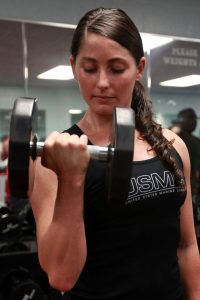
You may have heard that weight training is a great way to lose weight. Indeed, weight training itself consumes a lot of calories. In addition, the extra muscle mass increases the basal metabolic rate, so your body would burn more calories in a day. “More muscles, less fat” is the motto.
Unfortunately, some of these statements are not entirely correct. Let’s take it point by point:
It is true that strength training burns calories because it is after all a physically strenuous activity.
However, the real training time corresponds to only part of the total duration of a weight training session: for one hour in the gym, you will spend 30 to 45 minutes on break between your series. You do not burn a record amount of calories during a workout, about 300 to 400 kcal per workout. For comparison: an hour of intense cardio training consumes about 500 to 800 kcal. [9]
And what about the increase in metabolism? It actually increases only about 13 kcal per kg of additional muscle mass per day, so very little. [10] A few calories are obviously added when this kg of muscle is active. Finally, each additional kg of muscle mass consumes more and more energy to move the body itself. But even these two points are of negligible importance.
The bottom line
Strength training and extra muscle mass make you burn extra calories, but it’s not a realistic way to lose weight fast. Indeed, you need extra calories to build muscle, and therefore need to consume more calories than you burn.
You will not lose weight, and gain weight instead. Besides: since muscles are heavier than fat, gaining weight can make you gain weight quickly, without necessarily having to change your clothing size.
How to solve this problem? Because your final goal is surely to have a strong and slender body at the same time …
The solution is to proceed in two phases: after having developed muscle mass in phase I (and possibly a little fat), you get rid of fat in phase II, while maintaining most of your muscles. To do this, you can continue weight training while following a protein-rich diet.
“I have to train differently for the definition than for gaining muscle mass.”

There is no specific training for defining or gaining muscle mass. Muscles can only be rebuilt or maintained by training. If you train too little or not at all, or if you have a bad diet, you lose muscle mass. This applies to both men and women, although women often appreciate bodybuilding because it simply “defines” or “tightens” their muscles. However, this is physiologically absurd.
There is only one way to get well defined muscles: as described above, you will need to continue bodybuilding and follow a high protein diet to lose fat until your muscles are visible.
“The more muscles I have, the more strength I have.”
As with the percentage of body fat, many people wonder what percentage of muscle is ideal for a woman. However, this approach is not really effective, because muscles are not an end in themselves. They support your body and give you the ability to move and do physical activities.
So here it is a question of quality rather than quantity . In fact, your health and well-being do not depend on the size of your muscles, but on their performance.
It is true the strength and the quantity of muscles are linked, to a certain extent. But the equation “the more muscles I have, the more strength I have” is wrong . Indeed, strength is not only based on existing muscle mass, but also on the ability of the nervous system to control and use muscle fibers.
And this ability must be specifically trained. This is why most bodybuilders would look old even when faced with much less trained athletes in a weightlifting competition: their muscles are bigger, but their nervous system does not know how to use them in an optimal way because it was programmed differently.

Here is the best example
The Venezuelan Stefanie Cohen is 1.53 m tall, weighs around 55 kg and can perform a squat with a load of 200 kg (3.6 times the weight of her body)!
The record for this exercise is 247 kg (4.5 times body weight). This woman is obviously an absolutely exceptional athlete. But in absolute values, his muscle mass is still much lower than that of a bodybuilder of 95 kg for example.
And the latter should already be very strong to lift the same load as Cohen which is much lighter. If he was as strong as she in relative terms, he would be just as much a sensation. So, it is better to consider your strength than the size of your muscles; especially since the size of the muscles can be quickly changed by carbohydrates and water retention.
You may also like
What is the best protein power for building muscle.
Notes and annotations:
- [1] Zatsiorsky, VM; Kraemer, WJ: „Krafttraining – Praxis und Wissenschaft“, Meyer & Meyer Publishing 2016, p. 270 – 297.
- [2] AG Wissenschaft (2012): „Fett- und Muskelmasse [%] im Altersgang 0-100 Jahre” , accessed October 8, 2019.
- [3] Biesalski, HK et al .: „Ernährungsmedizin”, Éditions Georg Thieme 2010, p. 94.
- [4] Fit for Fun: „Dehnen – lieber nicht vor dem Sport!” Und Willen, K .: „Dehnen vor dem Sport kostet Leistung – aber egal” , consulted on 8 October 2019.
- [5] Deutsche Gesellschaft für Ernährung: „Referenzwerte: Protein” , accessed 8 October 2019.
- [6] Breitenstein, B .: “Bodybuilding: Massive Muskeln”, Rowohlt Taschenbuch Verlag GmbH 2003, p. 41.
- [7] Zeilberger, K .; Rudolf-Müller, E .: „Testosteron” , accessed October 8, 2019.
- [8] auch für die List Zatsiorsky, VM; Kraemer, WJ: „Krafttraining – Praxis und Wissenschaft“, Meyer & Meyer Publishing 2016, p. 270 – 297.
- [9] Kalorienwerte auf Basis des „Compendium of Physical Activities (2011)” ,
- [10] Stemper, Theodor: „Stärkere Muskeln erhöhen den Grundumsatz! – Fakt oder Fiktion? “ , Accessed October 8, 2019.
